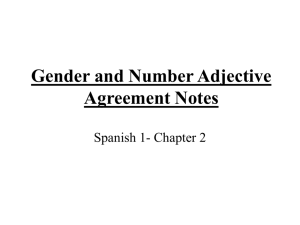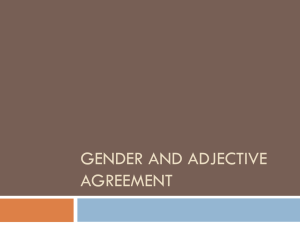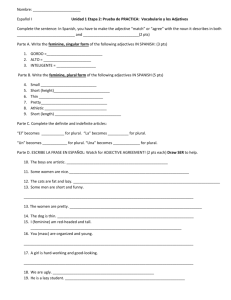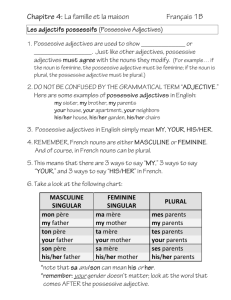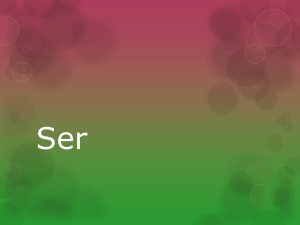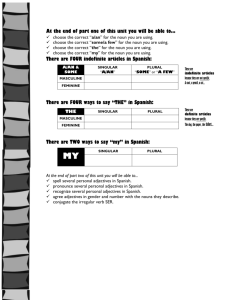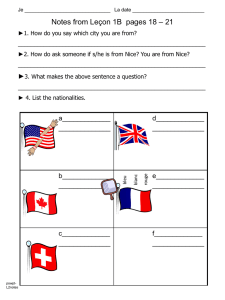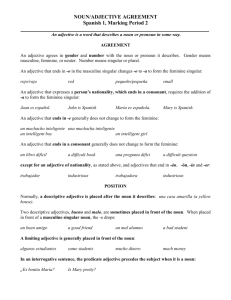Señora Rodriguez La Fecha: 10/15/14
advertisement
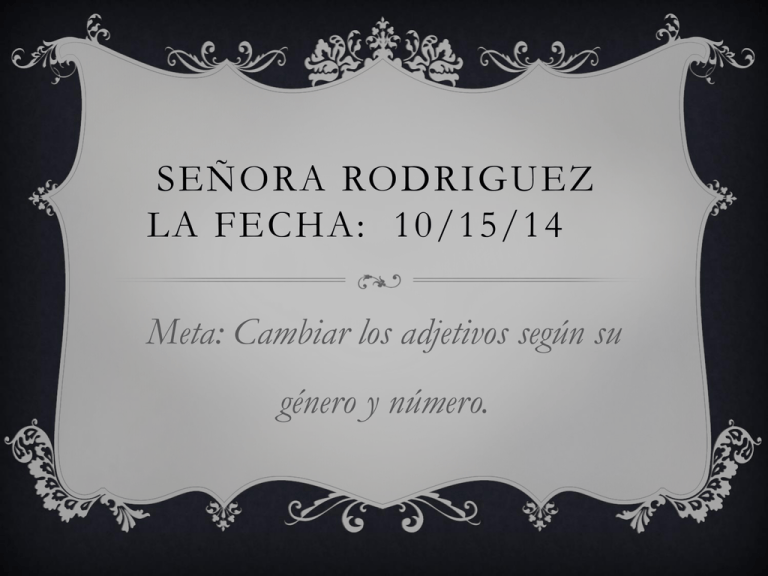
SEÑORA RODRIGUEZ LA FECHA: 10/15/14 Meta: Cambiar los adjetivos según su género y número. WHAT IS AN ADJECTIVE? An adjective is a word that describes a noun. Adjectives must agree with the gender and number of the subject. Adjectives can be masculine or feminine. Adjectives can be singular and plural. A D J E C T I V E S I N S PA N I S H H AV E G E N D E R A N D NUMBER. WHAT DO I MEAN BY GENDER? WHAT DO I MEAN BY NUMBER? Masculine form Feminine form Examples Ends in –o Changes from –o to –a Simpático simpática Ends in –e or in a consonant Does not change Inteligente inteligente Joven joven EXAMPLES: Carla es simpática. • You are describing a girl, therefore you need to have a feminine adjective. José es simpático. • José is a boy, therefore you need to use a masculine adjective. SINGULAR OR PLURAL Singular form Plural form Examples Ends in a vowel (a,e,i,o,u) Add an –s Simpatico simpaticos Ends in a consonant. Add and –es Joven Jóvenes EXAMPLES: Carla y José son simpáticos. When you are talking about more than one person make the adjective plural. Carla is a girl and Jose is a boy, therefore we use the masculine plural adjective. Carla y Maria son simpáticas. when you are describing a group of girls your adjective must be feminine and plural CORRECT THE FOLLOWING SENTENCES: 1. Carlos y Maria son inteligente Correct: Carlos y Maria son inteligentes. 1. Tú soy muy bonita. Correct: Tú eres muy bonita. 1. Carmen es altos. Correct: Carmen es alta. TAREA Write ten sentences describing yourself, your friend, your teachers in Spanish. Make sure you describe them using different adjectives learned in class today. Don’t forget about the verb ser.
